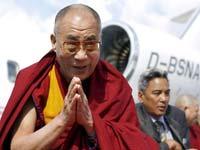Canada offers hope to Tibetan exiles

Largely forgotten and pawns in a dispute between Asian superpowers, they live on the remote mountainous, mist-cloaked region of North India in tiny settlements bounded by strife and uncertainty.
But for 1,000 of these Tibetan exiles, hope awaits in Canada which has offered to take them in and give them new lives.
Just before last Christmas, The Government of Canada announced that they would facilitate the immigration of 1,000 Tibetan refugees from the state of Arunachal Pradesh in India over a five-year period.
Jason Kenney, Citizenship, Immigration and Multiculturalism Minister, stated that the Canadian Government wants to work with the Government of India and the Tibetan-Canadian community on carrying out this program, and on welcoming these individuals to Canada.
“Our government’s openness to Tibetan refugees is in keeping with Canada’s best humanitarian traditions,” said Minister Kenney.
“This is truly a moment for all of us to thank the Canadian government for their courage and commitment,” wrote Dermod Travis the executive director of the Canada Tibet Committee.
“In 2007, when His Holiness the Dalai Lama visited Ottawa he asked if Canada would welcome a number of Tibetans living in India to our country.
Following this request, with incredible support from Tibetan communities and their cultural associations across Canada, Ottawa announced the humanitarian resettlement program on Dec 18. The Canadian government is to work out on immigration process with Indian government in consultation with Dalai Lama’s – Tibetan – government-in-exile.
These measures will focus on individuals who meet specific criteria, those who have secured the support of the Canadian-Tibetan community or other interested supporters, in order to maximize the involvement of communities in Canada.
There are 39 Tibetan settlements across India, and three of them are located in Arunachal Pradesh which includes Bomdila, Tezu and Tenzingang.
All the three are located on a route followed by Dalai Lama to enter India after he escaped from Tibet when Chinese troops marched into Lhasa in 1959. Estimated 80, 000 Tibetans followed Dalai Lama to India. Dalai Lama who was conferred with Nobel Prize for peace seeks more autonomy the China administered Tibet.
This is not the first time Canada has assisted Tibetans. In 1972, Canada established the Tibetan Refugee Program and resettled approximately 230 Tibetans in Canada who had been living in Northern India. Tibetan officials say that government of Canada will develop special immigration.
Tibetans selected under this program would require to meet Canada’s requirements for immigration, including security, criminal, medical and background checks.
The Canadian government offer came three years after Nepalese government rejected United States sponsored immigration program for Tibetans. United States program had hit the road block, as the coalition government led by Maoist refused to grant exit visa to the Tibetans living in Nepal.
“American programs had suffered set back as Nepalese government became reluctant to give exit visa to exiles” Central Tibetan Administration Cabinet Secretary Migyur Dorje told Indian media.
The Bush administration had offered to settle as many as 1000 Tibetans exiles, particularly those whose kins had participated in American sponsored covert guerilla war against Chinese led from Mustang in Nepal.
Covert war met an abrupt end when the Dalai Lama sent a recorded message in 1972 appealing the guerillas warriors to give up weapons, many of them offended committed suicide and other took up petty professions like working on the roadside. It is estimated that at least 20,000 Tibetans are currently living in Nepal, but the actual number could be well over 30,000.
Of these, less than 20,000 are believed to have Registration certificate and new regulations enforced by Nepalese government is making it increasingly difficult for exiles to obtain and renew RC’s on an annual basis.
Nepal stopped allowing Tibetan refugees to settle in its land following diplomatic pressure after a flood of refugees fled in the wake of the 1987-89 Lhasa protests.
The mountainous state of Arunachal Pradesh shares a 1,030-km unfenced border with China. The McMahon Line, an imaginary border now known as the Line of Actual Control, separates the Sino-Indian border along Arunachal Pradesh.
India and China fought a bitter border war in 1962, with Chinese troops advancing deep into Arunachal Pradesh and inflicting heavy casualties on Indian troops.
The border dispute with China was inherited by India from the British colonial rulers, who hosted a 1914 conference with the Tibetan and Chinese governments that set the border in what is now Arunachal Pradesh.
If you want to lend a hand in Canadian resettlement effort for the Tibetan exiles living in Arunachal Pradesh, please email ctcoffice@tibet.ca
TIBET TODAY
Invaded by China in 1949, Tibet has suffered loss of life, freedoms and human rights under communist Chinese domination.
In March 1959, an uprising against the Chinese occupation in Tibet was crushed and the Dalai Lama, Tibet’s temporal and spiritual leader, was forced to escape into exile in India, followed by 80,000 Tibetans. The Dalai Lama now heads the Tibet Government-In-Exile in India.
More than one million Tibetans – a sixth of the population – have died as a result of the occupation.
Tibetans are now a minority in their own country due to the continuous influx of Chinese immigrants.
Tibetans are imprisoned and routinely tortured for religious practice and resistance to the occupation.
More than 6,000 monasteries have been looted and demolished.
The Tibetan plateau ecosystem, as well as wildlife and forests, have been devastated for Chinese profit.
Tibet has been used as a site for production of nuclear weapons.
The total population of Tibetan exiles is said to be around 150,000 around the world but some of them did not participate in the survey as they have taken up citizenship of other countries, particularly the US, Canada and European countries
In 1967 the Dalai Lama appealed to the international community to accept Tibetan refugees as immigrants.
– Canada Tibet Committee









